Wang Ilbeonji Sikdang (왕일번지식당)
11.0 Km 18916 2024-02-20
4610 Jungsangandong-ro, Pyoseon-myeon, Seogwipo-si, Jeju-do
Wang Ilbeonji Sikdang specializes in black pork bulgogi. Their dwaeji bulgogi (pork bulgogi) is marinated in a spicy sauce and served with Jeju bracken and shiitake mushrooms. Accompanied by seaweed soup and a variety of side dishes, the meal also features juicy and thick black pork belly. It offers a plentiful meal at a reasonable price and is only open for lunch.
Gimnyeongsagul Cave [UNESCO World Heritage] (김녕사굴 [유네스코 세계자연유산])
11.0 Km 21046 2022-12-29
34, Manjanggul-gil, Jeju-si, Jeju-do
+82-1600-0064
Gimnyeongsagul Cave is located close to Manjanggul Cave in the northeastern part of Jeju Island. The name of the cave, "Sagul," comes from the snake-like formation of the cave ("sa" meaning serpent). The entrance of the cave is wide like a serpent holding its mouth wide open, but once inside, the tunnel narrows resembling the body of a snake. Gimnyeongsagul Cave is a highly protected area and has been designated as Natural Monument along with Manjanggul Cave.
Seongeup Folk Village (성읍민속마을)
11.1 Km 140377 2024-03-11
3294, Seongeup-ri, Pyoseon-myeon, Seogwipo-si, Jeju-do
+82-64-710-6797
Seongeup Folk Village has been designated and protected as a folk village, preserving the characteristics of Jeju's old private houses. Various tangible cultural heritage and intangible cultural heritage such as folk songs and games, local foods and craftmanship, and Jeju dialect are being passed down. The village offers traditional culture and traditional house experiences, and holds cultural events every October and November.
Yongcheondonggul Cave [UNESCO World Natural Heritage Site] (용천동굴 [유네스코 세계자연유산])
11.6 Km 24114 2020-11-27
Woljeong-ri, Jeju-si, Jeju-do
+82-1600-0064
Yongcheondonggul Cave is the most typical form of lava tunnel on Jeju Island and with a total length of approximately 2,470 meters, it is one of the largest. It has a unique topology and rich limestone formations such as lava terrace, lava shelves, lava waterfalls, and 140 meters of lava rolls. In particular, a range of carbonate formations such as straw soda, stalactite, columns, flowstones, cave corals, and aragonite crystals can be found inside this large cave that also contains a lake. This unique cave is astounding in terms of its geological value and beauty. There are also items that can be found throughout the cave that appear to have been brought in by people who lived on the island long ago, such as pieces of pottery, animal bones, ironware, charcoal and other substances.
* The UNESCO World Heritage inscribed Geomunoreum Lava Tube System consists of Bengdwigul, Manjanggul, Gimnyeonggul, Yongcheondonggul and Dangcheomuldonggul Caves.
Gimnyeong Seongsegi Beach (김녕성세기해변 (김녕해수욕장))
11.8 Km 31418 2023-01-17
237, Gujwahaean-ro, Jeju-si, Jeju-do
+82-64-740-6000
The clear waters that are highlighted with cobalt-blue and the clean white sand of Gimnyeong Seongsegi Beach steal the hearts of visitors every year. The beach is also popular with fishermen, who enjoy rope fishing from the rocks. This area is known to be good for catching striped beakfish and spotty belly greenlings. Not far from the beach is Manjanggul Cave, which offers a welcome escape from the daytime heat.
Around Follie (어라운드폴리)
11.8 Km 0 2024-06-05
433 Seoseongil-ro, Seongsan-eup, Seogwipo-si, Jeju-do
Around Follie is a hotel-slash-campground located in Seogwipo-si, Jeju. The campground provides all the camping equipment needed for as few as one person to a whole family of campers, so everyone can enjoy camping with ease.
Timestamp (타임스탬프)
11.8 Km 0 2024-03-20
1F, 92-1 Sinbuk-ro, Jocheon-eup, Jeju-si, Jeju-do
Timestamp is a distinctive café in Jeju that doubles as a small photo studio. Its hallmark offering is the hallabong ade, alongside a selection of other beverages and desserts like Americano and vanilla latte. In its photo studio, visitors have the opportunity to take ID and souvenir photos, with the added feature of a facility for self-service black and white photography. The café's retro-style interior has made it a hit on social media, attracting many visitors.
Namokdo Sikdang (나목도식당)
12.5 Km 46 2021-03-24
60, Gasi-ro 613beon-gil, Seogwipo-si, Jeju-do
+82-64-787-1202
This is a restaurant of Duruchigi (Korean stir-fried pork) that is frequently visited by locals in Jeju. This Korean dishes restaurant is located in Seogwipo-si, Jeju-do. The representative menu is stir-fried pork.
Seogwipo Gasiri Village (Noksan-ro Canola Flower Road) (서귀포 가시리마을 (녹산로 유채꽃도로))
12.6 Km 9541 2024-01-09
20 Gasi-ro 565beon-gil, Pyoseon-myeon, Seogwipo-si, Jeju-do
Seogwipo Gasiri Village is where canola flowers and cherry blossoms bloom simultaneously over a 10-kiliometer section from its access road every April, boasting a picturesque driving route. The combination of yellow canola flowers and light pink cherry blossoms is very special. Selected as one of the “100 Beautiful Roads in Korea,” Gasiri Noksan-ro Road is a road that passes through Noksanjang and Gammajang, which were the best horse farms of the Joseon period, and is currently one of the best canola flower roads in Jeju. As such, it is called the "First Sight of the Ten Sights of Gasiri Village." In addition, visitors can enjoy beautiful natural scenery unique to Jeju, such as Ttarabioreum and Keunsaseumioreum Parastic Cones.
Dangcheomuldonggul Cave [UNESCO World Natural Heritage Site] (당처물동굴 [유네스코 세계자연유산])
12.7 Km 20850 2020-04-23
Woljeong-ri, Gujwa-eup, Jeju-si, Jeju-do
+82-1600-0064
Dangcheomuldonggul Cave, located in Jeju, is a lava tube estimated to have been formed some 320,000 years ago due to volcanic activity; it is located approximately 3 kilometers underground. With no entrance as such, the cave is not open to the general public and thus its original form remains preserved to this day, giving it a high geological value.
Although the Dangcheomuldonggul Cave is technically a lava tube, it resembles a limestone cave due to the secondary geological formations
of lime substances that have accumulated in the ground above the tube. The tunnel has a spectacular and mystical beauty with countless stalactites and stalagmites, as well as stalactite columns. The particularly thin stalactites and stalactic columns in this cave are well-known for their uniqueness and beauty. Although this is a relatively small lava tunnel, its exotic colors and the richness of the secondary topological formations make it extraordinary in terms of research value. This cave has been designated natural monument.
* The UNESCO World Heritage inscribed Geomun Oreum Lava Tube System consists of Bengdwigul, Manjanggul Cave, Gimnyeonggul, Yongcheondonggul and Dangcheomuldonggul Caves.
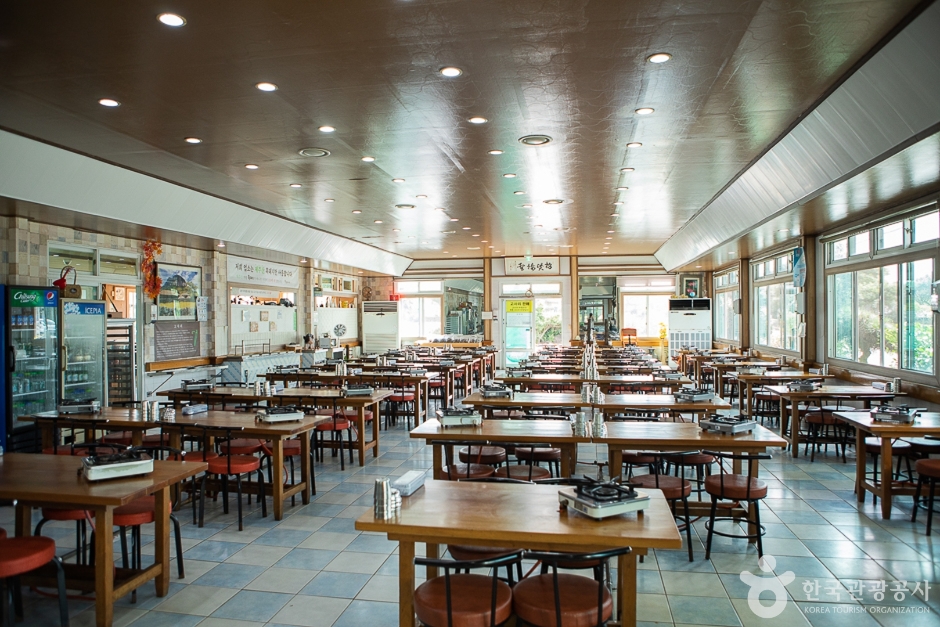
![Gimnyeongsagul Cave [UNESCO World Heritage] (김녕사굴 [유네스코 세계자연유산])](http://tong.visitkorea.or.kr/cms/resource/37/1618237_image2_1.jpg)
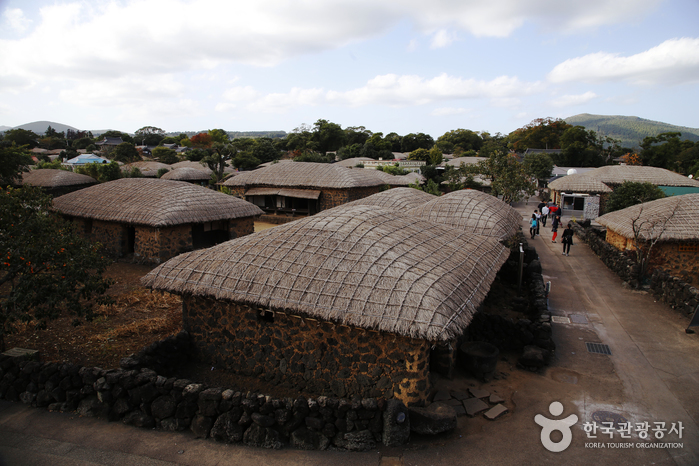

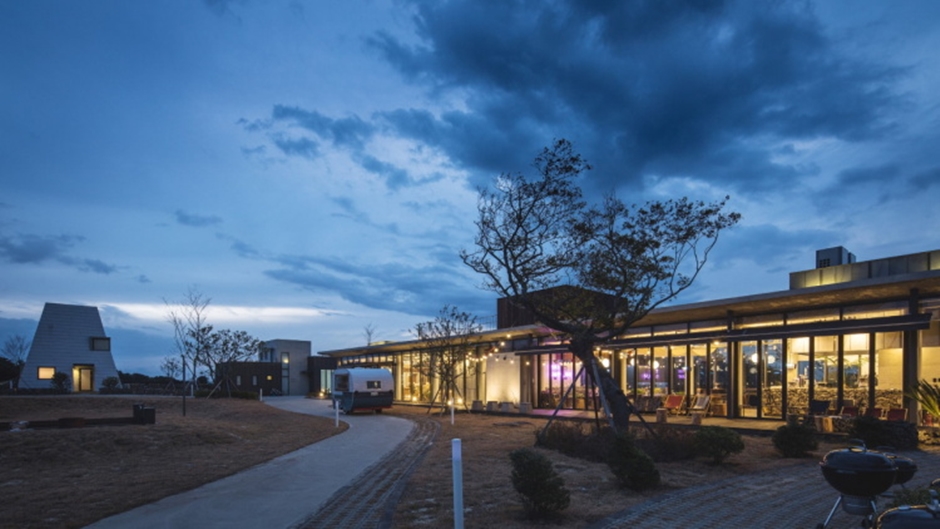
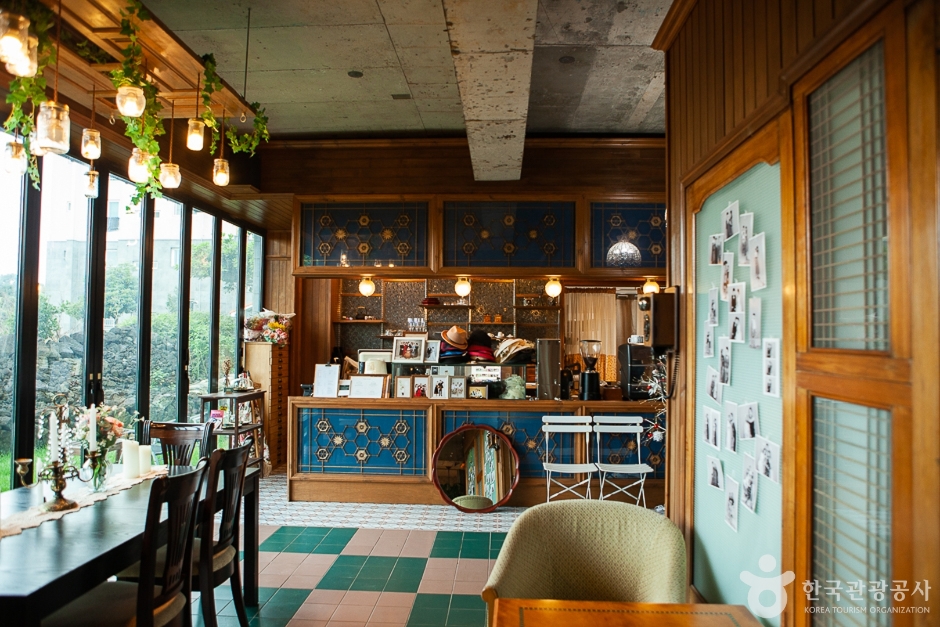
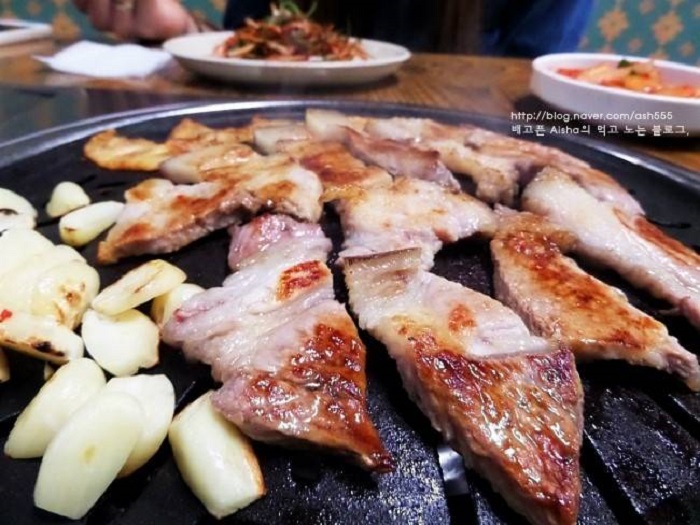
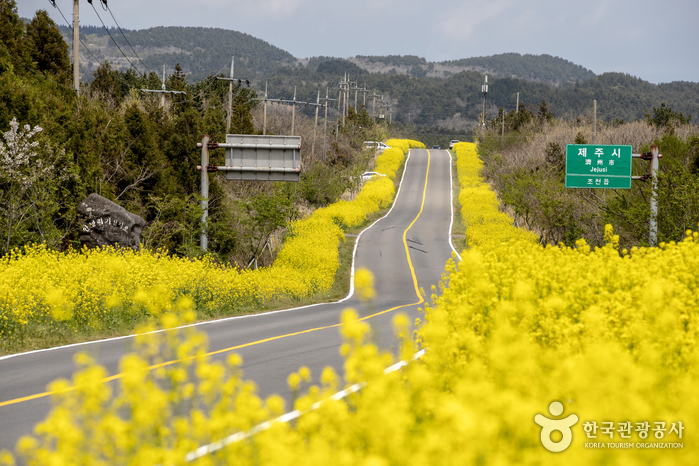
 English
English
 한국어
한국어 日本語
日本語 中文(简体)
中文(简体) Deutsch
Deutsch Français
Français Español
Español Русский
Русский